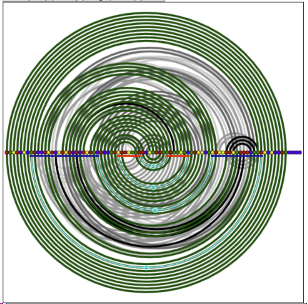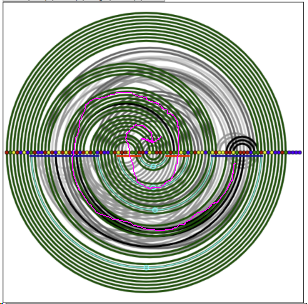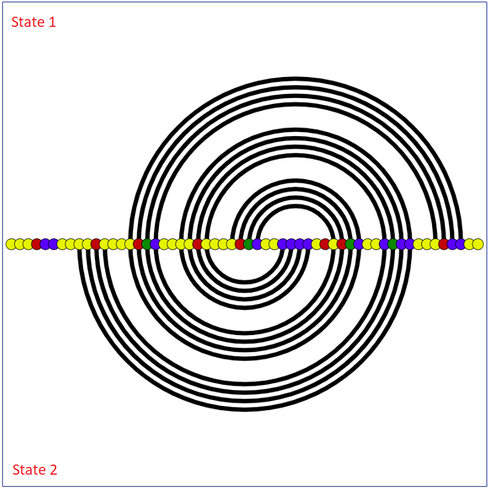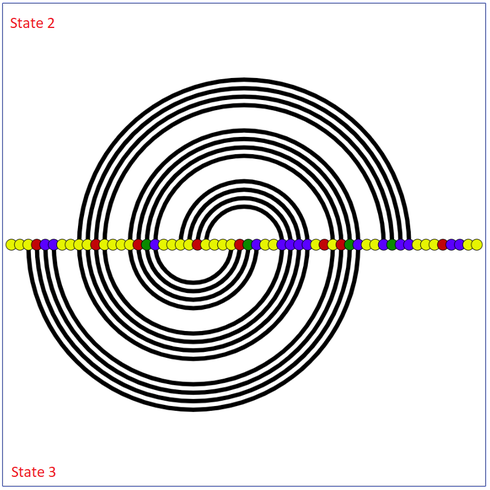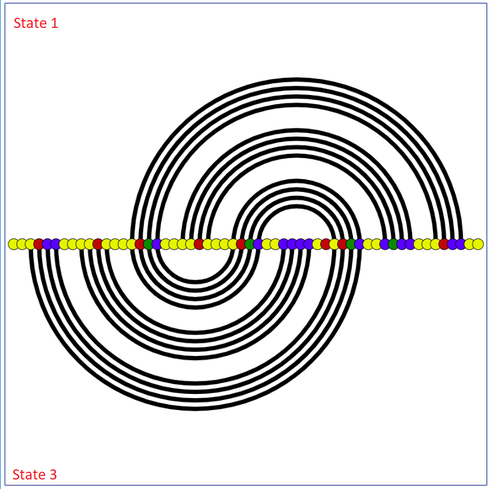For Tryptophan A Same State, these seem interesting to me:
seq, minAoff, minAon, minAx, maxAx, minRoff, minRon, minRx, maxRx, mfe1, mfe2, dFE, bonus, same, pp1, pp2, d1, d2
GCCUGAGAACGGUCCAAAUAACUCCUCCGACGAGGACCGGUACGGCCGCCACUCGGUAACGAAUGAGGAGUGGCGGAUCUCAGGC, 0.004, 0.703, 146.611, 182.506, 0.004, 0.702, 158.660, 182.411, -39.200, -39.200, 0.00, -4, 1, 0.996151, 0.701914, 0.008729, 0.034545
GCCUGAGAUCGGUCCAAGAGGUAACGAAUGCGAGGACCGGUACGGCCGCCACUCGCCGACUCUUGAUAAAGAUGGCGGCUCAGGC, 0.006, 0.774, 120.303, 139.307, 0.006, 0.707, 111.855, 139.204, -33.900, -35.100, 1.20, -4, 1, 0.994491, 0.706812, 0.234304, 0.209413
UCUGCAAACUAUGAGUGGCCGACGAACCGACGAGGACCGGUACGGCCGCCACUCGAAGGUUUGGUAACGAAUGCCACAAAGCAGA, 0.002, 0.594, 248.497, 249.017, 0.002, 0.556, 248.846, 248.855, -31.000, -31.700, 0.70, -4, 1, 0.997767, 0.555674, 0.431786, 0.360016
UCUGCUAACUAUGAGUGGCCGACGAACCGACGAGGACCGGUACGGCCGCCACUCGAAGGUUUGGUAACGAAUGCCACAAAGCAGA, 0.007, 0.803, 121.408, 121.482, 0.006, 0.750, 121.321, 121.329, -32.000, -33.300, 1.30, -4, 1, 0.993820, 0.749811, 0.412265, 0.353036
GUGAUCCACUAUGAGUGGCCGACGAAUCGACGAGGACCGGUACGGCCGCCACUCGAAGGUUUGGUAACGAAUGCCACAGGAUUAC, 0.006, 0.800, 114.672, 123.456, 0.006, 0.737, 123.360, 123.395, -30.100, -31.300, 1.20, -4, 1, 0.994026, 0.737162, 0.386218, 0.325203
GUGAUCCUACCUAUGAGUGACCGACACUGACGAGGACCGGUACGGCCGCCACUCGUAGGUGGUAACGAAUGUUAUUCAGGAUUAC, 0.013, 0.892, 23.948, 67.111, 0.012, 0.798, 66.968, 67.068, -30.700, -31.700, 1.00, -4, 1, 0.988102, 0.797973, 0.379268, 0.329051
GCUCAUUUUACGAGAGGCCGACGUGACUGACGAGGACCGGUACGGCCGCCACUCGUAUUUCAUGGUAACGAAUGCCAUUCUGAGC, 0.004, 0.702, 171.650, 182.943, 0.003, 0.522, 182.791, 182.796, -27.700, -28.700, 1.00, -4, 1, 0.997145, 0.521883, 0.438209, 0.367725
AAAGAAAAUACUCUUUUACGGGCGUCCGACCGAGGACCGGUACGGCCGCCACUCGGGUAACGAAUGACGGGAUCGUAAAAGAGAA, 0.012, 0.881, 73.944, 74.024, 0.010, 0.744, 73.597, 73.979, -32.100, -32.700, 0.60, -4, 1, 0.989889, 0.744144, 0.527156, 0.468019
ACGCUCCAAUUAUAACGGCCGACACGUUUACGAGGACCGGUACGGCCGCCACUCGAUCGUGGUAACGAAUGCCGAAAAGGAGCGA, 0.016, 0.910, 55.614, 56.246, 0.013, 0.756, 50.148, 56.154, -29.000, -30.400, 1.40, -4, 1, 0.986535, 0.756111, 0.340554, 0.284054
CCUCCUAUAGGAUGAUAUCGAAUCCGCCGACGAGGACCGGUACGGCCGCCACUCGGUAACGAAUGCGGCGACAUCCUGUAGGAGG, 0.011, 0.874, 72.217, 78.184, 0.010, 0.711, 68.434, 78.138, -41.100, -42.500, 1.40, -4, 1, 0.989604, 0.711440, 0.374165, 0.285274
Once again, all have relatively clean, symmetrical dot-plots, a strong, static neck, the aptamer and reporter both show in MFE for state 2, and the metrics are similar to those of prior lab winning designs (R101, R107) except for the seventh one whose d1 is just slightly high.
like: maxAx>20,maxRx>50,minAon>50%,minRon>50%,d1<0.5,d2<0.5,dFE<1.5
